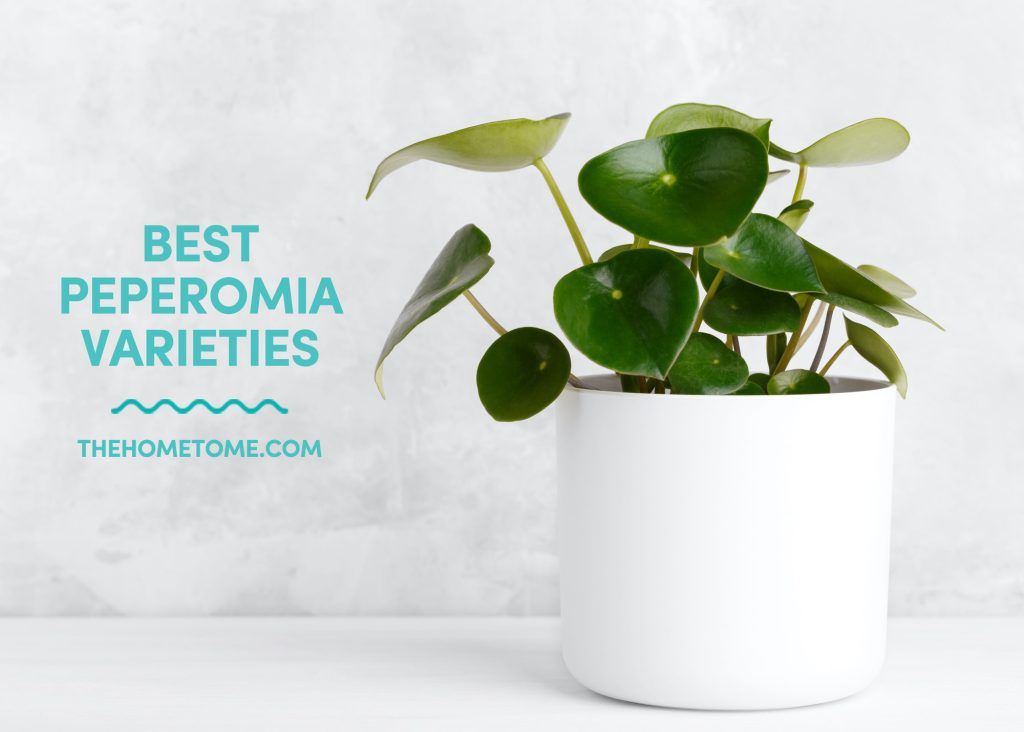With over species, the Peperomia plant is a common choice for houseplant growers. This houseplant can be grown indoors and outdoors and is an easy maintenance plant. The dominant color of the Peperomia plant is green, although varieties are identified by different hues of green.
With a varied foliage design and shape, it is a topper for those who are keen on improving the outlook of their home, both indoors and outdoors.
An interesting feature of the Peperomia plant is some varieties are trailing plants, while others are not. In addition, some of its varieties are tricolored.
The best of this plant is usually gotten when grown alongside other varieties with different foliage colors and designs. Its appearance is complemented when it is grown in attractive containers. The basic requirements of the Peperomia plants are watering, lighting, proper soil, appropriate temperature, and humidity, and a suitable container.
If you are considering propagating the Peperomia variety, you are in the right place because we have provided a list of the most popular and attractive Peperomia plants alongside providing tips that would help you in your propagation journey.
Peperomia Plant Profile
Below is a brief profile of the Peperomia plant and a few tips that would be helpful to you:
| Scientific name | Peperomia spp. |
| Native Origin | Mexico, South America |
| Light | Bright indirect light |
| Watering | Moderate watering |
| Temperature | 65°F-80°F |
| Toxicity | Non-toxic to pets and humans |
| Food | Liquid house plant fertilizer |
| Humidity | Low humidity |
| Mature size in height | 10 inches |
| Average life span | 5-8 years |
The following tips are sure to help you in your propagation journey.
- Check the moisture level of the soil to prevent overwatering and never allow the spoil completely dry out before watering it.
- Combat pest immediately after detection and eliminate by a strong spray of water or cleaning the plants with alcohol. For serious cases of infestation, you could make use of insecticidal soaps.
- When selecting attractive containers, make use of well-drilled containers for easy drainage of water. This help curbs the effect of overwatering.
- ensure that your soil must always be moist and not soggy after watering.
- Make use of attractive and colorful containers to accent the aesthetics of your home.
- Regularly mist the leaves by using a spray bottle.
- Keep the plant away from pets and kids.
12 Peperomia Varieties You Can Grow Today
We have provided 12 types of common Peperomia plants for you.
1. Peperomia Caperata Rosso
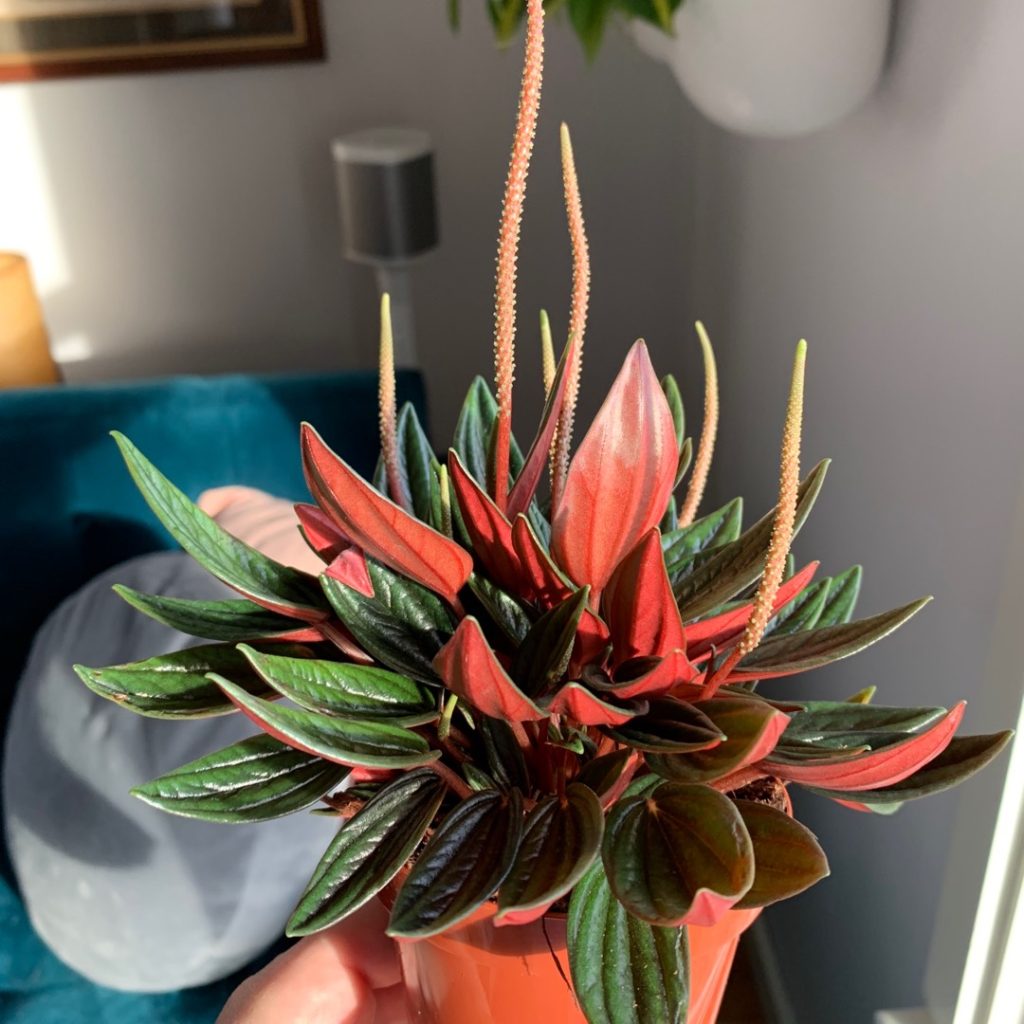
The Peperomia Caperata Rosso can be easily recognized for its thick and deep-lined leaves. In addition, the red underside makes it unique to other Peperomia varieties.
During bloom time, this variety produces flowers, although they are scentless and do not match the attractiveness of the foliage design of the Caperata Rosso plant. Provision of adequate watering, medium lighting, organic soil, appropriate temperature, and humidity assures you of a thriving Peperomia plant.
Although they are pretty resilient species, when neglected for an extended period, the plant’s growth becomes stunted and many issues start to crop up such as the leaves falling off or the leaves turning yellow. In most cases, it is usually a result of under-watering, overwatering, or poor lighting.
Ensure you give proper care and attention to your Peperomia Caperata Rosso to see it thrive as a perfect houseplant for your home. They accent your home when placed in attractive and creatively designed pots or containers.
2. Watermelon Peperomia
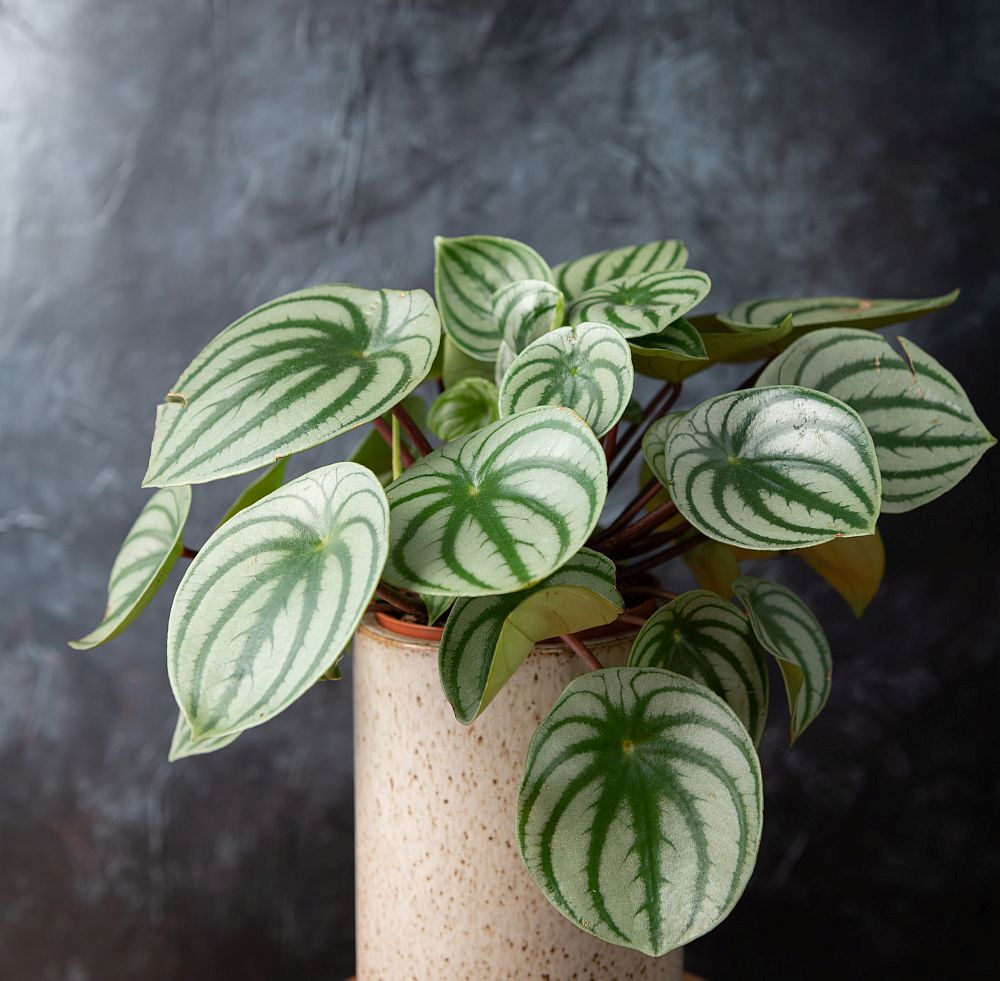
This plant is commonly referred to and sold under the tag name “Watermelon Peperomia” because of its semblance to the watermelon fruit design and color. As an attractive lot, it tops the list of most growers interested in propagating the Peperomia variety.
Stunted growth can be attributed to several factors such as poor lighting and this occurs when the plant is placed in a dark environment or in an area where it is not receiving adequate lighting.
This can be fixed by simply moving the container to a well-lit area or making use of artificial lighting from bulbs, especially when grown indoors. Although they can be should be placed in shaded areas if grown outdoors, they must still be able to receive bright indirect light.
Other factors that may contribute to stunted growth are root rot as a result of under-watering, inappropriate soil mix, over-fertilization, and pest infestations.
3. Peperomia Obtusifolia
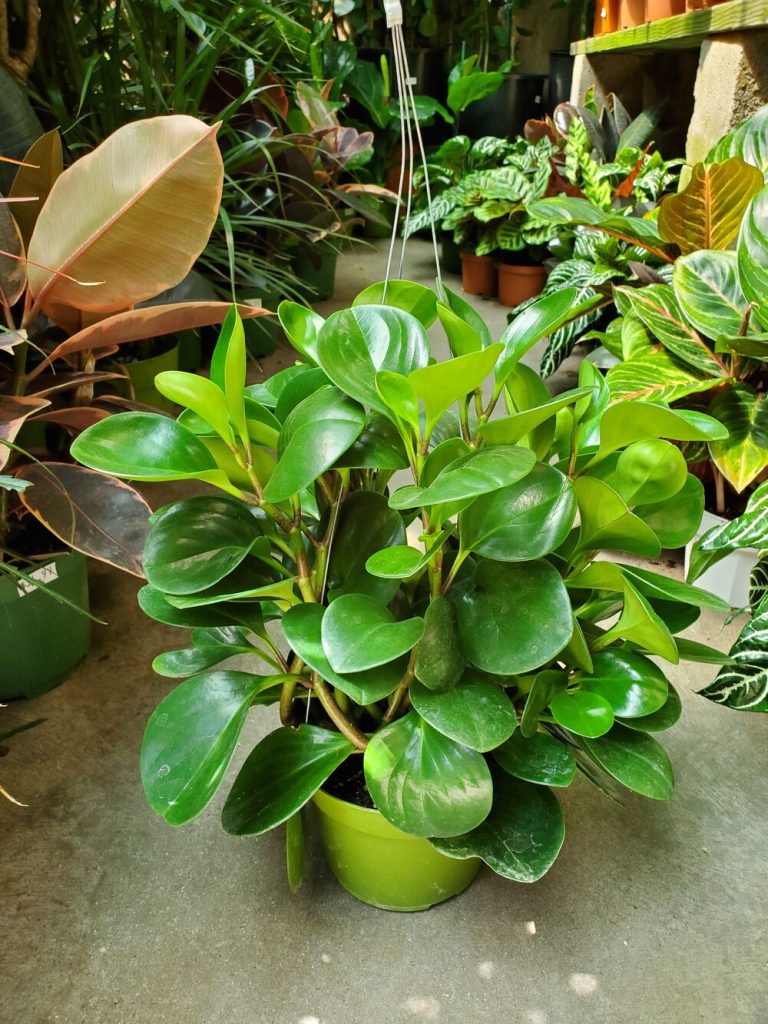
This variety is commonly sold under the tag name ‘’Baby rubber plant”. This tops the list of the most attractive foliage designs amongst other Peperomia varieties. The combination of a lighter and darker hue of green makes it a unique houseplant.
As an easy to propagate plant which can be grown both indoors and outdoors, they are suitable for beginners and those with busy schedules.
Another interesting feature of this plant is how the leaves stay erect when they become bushy. While this is fascinating, it can be disappointing to watch them go limp or wilt. Wilting or drooping leaves are a result of certain reasons.
Some of these reasons include exposure to dry and hot weather conditions, under-watering, over-fertilization, over-watering, and inappropriate containers (when the container can no longer accommodate the size and growth of your plant). Unfortunately, when growers discover their plant has started wilting, it is usually past the recovery stage.
While wilting and dried leaves cannot be restored, you can protect other leaves from such issues by identifying what led to the wilting and effecting necessary changes immediately.
4. Peperomia Metallica
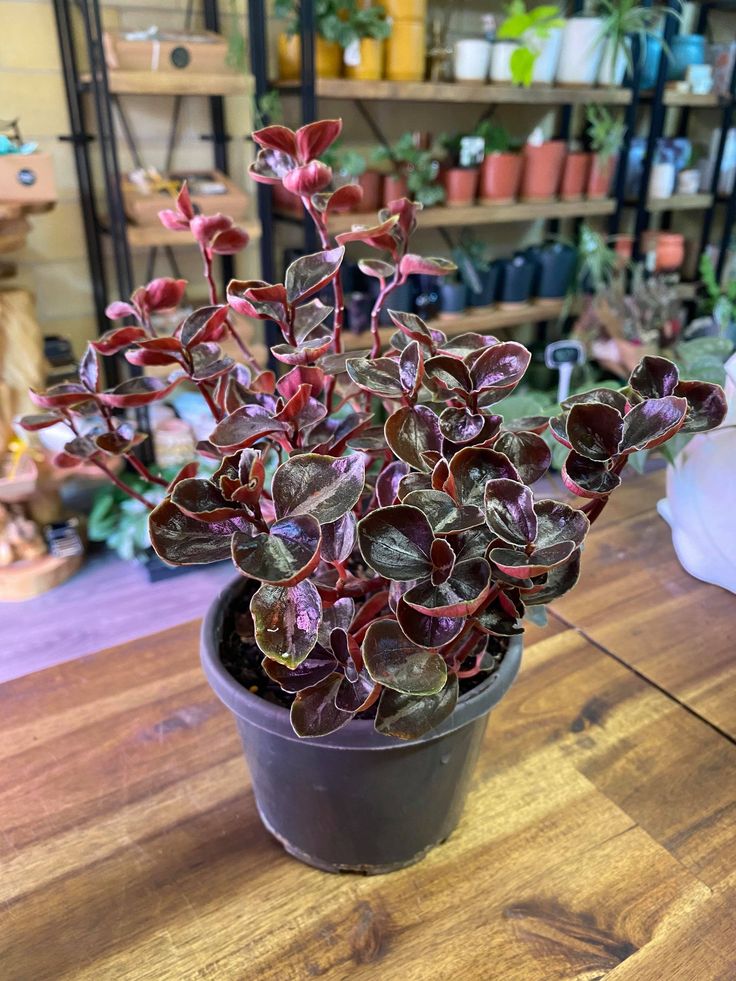
Unlike other varieties which have one or two prominent colors, the Peperomia Metallica has varied species and these species vary in foliage color as some different colors ranging from varied hues of green, red, and burgundy.
It is commonly referred to as Red Tree; this nickname can be attributed to its red stems.
This species is smaller compared to other varieties of the Peperomia plant. Since their foliage color is a major factor in their attractiveness, most growers do all within their power to preserve and enhance their foliage color.
Most Peperomia Metallica growers make use of fertilizers for this cause and can go overboard with the application.
While fertilizers are necessary for the growth of your Peperomia Metallica, going overboard can be detrimental to their growth as it can result in complicated plant problems.
The tell signs of over-fertilization are yellow leaves, brown/burnt leaves, root rot, leaf drop, and stunted growth. Once you detect these signs, stay off fertilizing the plant, repot and allow the roots to recover.
5. Peperomia Quadrangularis
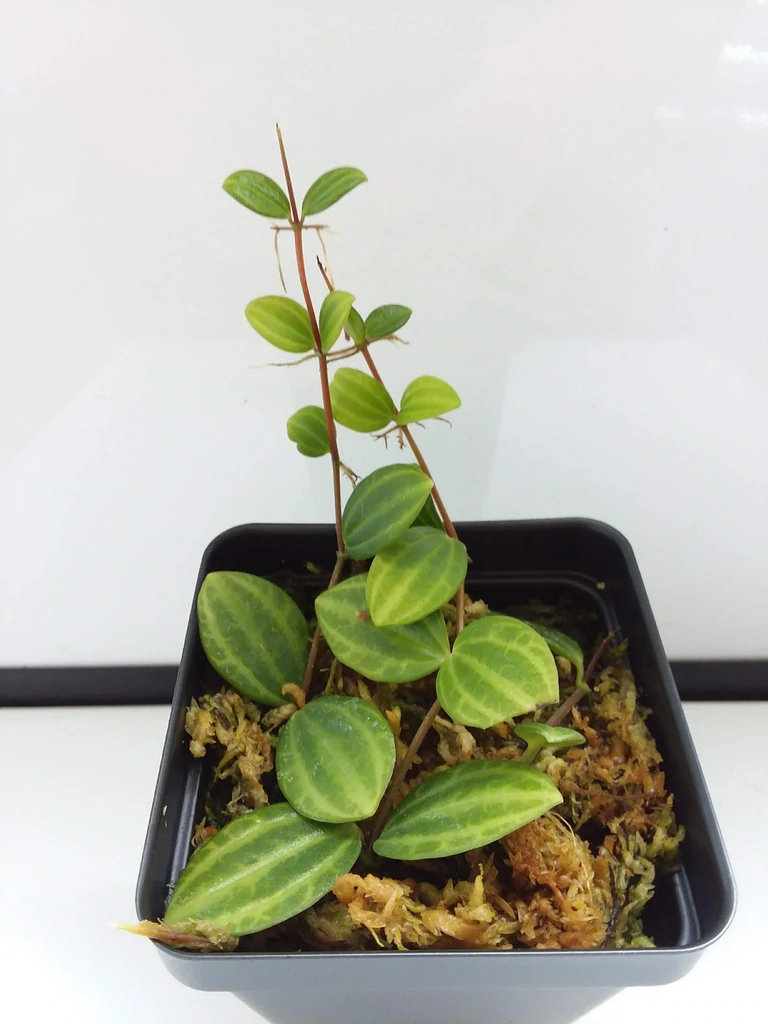
The common names of this variety include Peperomia Beetle and Radiator Plant. In comparison to other varieties, it settles as a lesser attractive variety but makes up for this as a low-maintenance plant. If you fancy this variety, compliment the appearance of the plant by placing them in brightly colored and beautiful pots and containers.
In addition, do not place them in inconspicuous locations. The Peperomia Quadrangularis is very common, hence its affordability.
They can be easily purchased from nearby nurseries or online stores. Since they are low-maintenance plants, all they need to thrive is adequate watering, organic soil, proper lighting, well-drilled containers to prevent waterlogging, and appropriate temperature.
Growers tend to go overboard with watering this plant because they are pretty resilient, but this can affect your plant in no small way. To prevent overwatering, check the soil texture with your fingertips, this gauges the amount of water your Peperomia Quadrangularis plant needs.
Your plant’s soil must always be moist after watering and not soggy.
6. Peperomia Belly Button
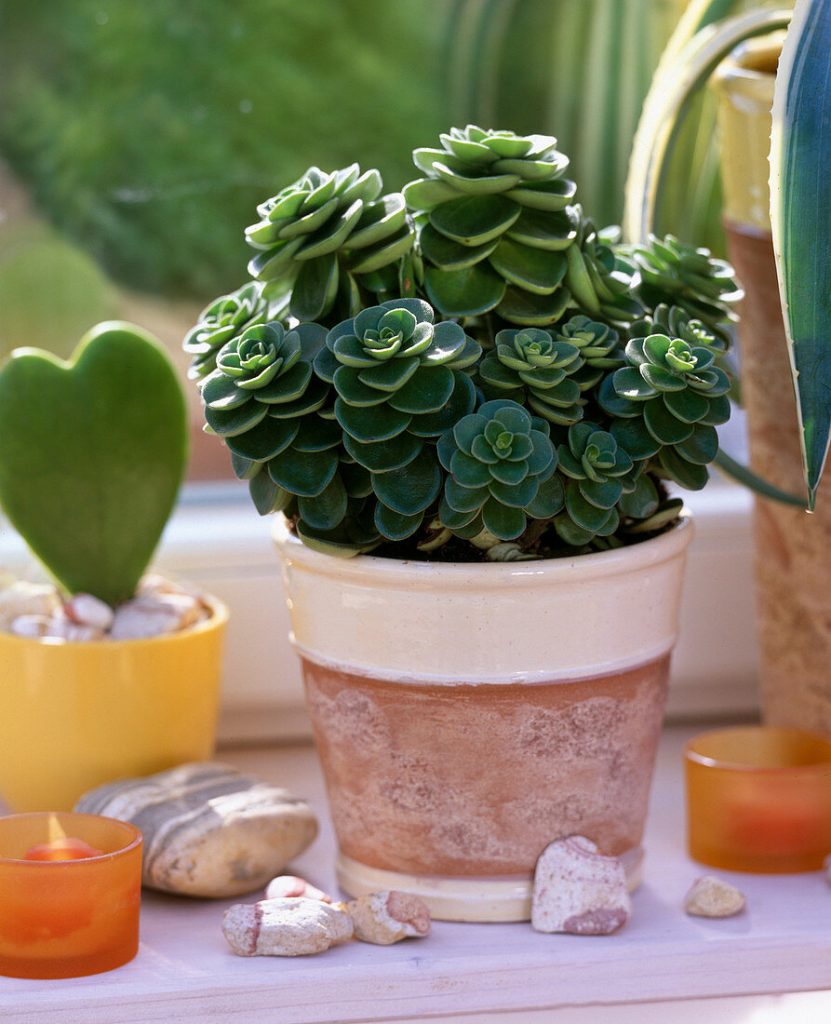
Before growers begin propagating the Peperomia Belly Button, they should be familiar with the problems they are likely to face to be well-equipped with the necessary information needed to combat them. One common issue growers of this species are likely to encounter is poor lighting, which results in sparse growth of the Peperomia Belly Button, drooping leaves, and fading leaves.
When properly tended to, the Peperomia can grow into a mass of full and beautiful leaves. While this has a beautiful effect on the home, especially when grown indoors to have an aesthetic effect on the home, the grower must be aware that a bushy plant requires more lighting than other plants.
This implies that if a bushy plant is exposed to poor lighting, you are setting it up for plant damage which starts as a change in foliage color and appearance; this is when you notice the bright green leaves start fading till it turns yellow, wilts, and eventually die.
This can be averted by ensuring all parts of the leaves get adequate lighting. If the natural lighting is insufficient, make use of artificial light.
7. Peperomia Clusifolia
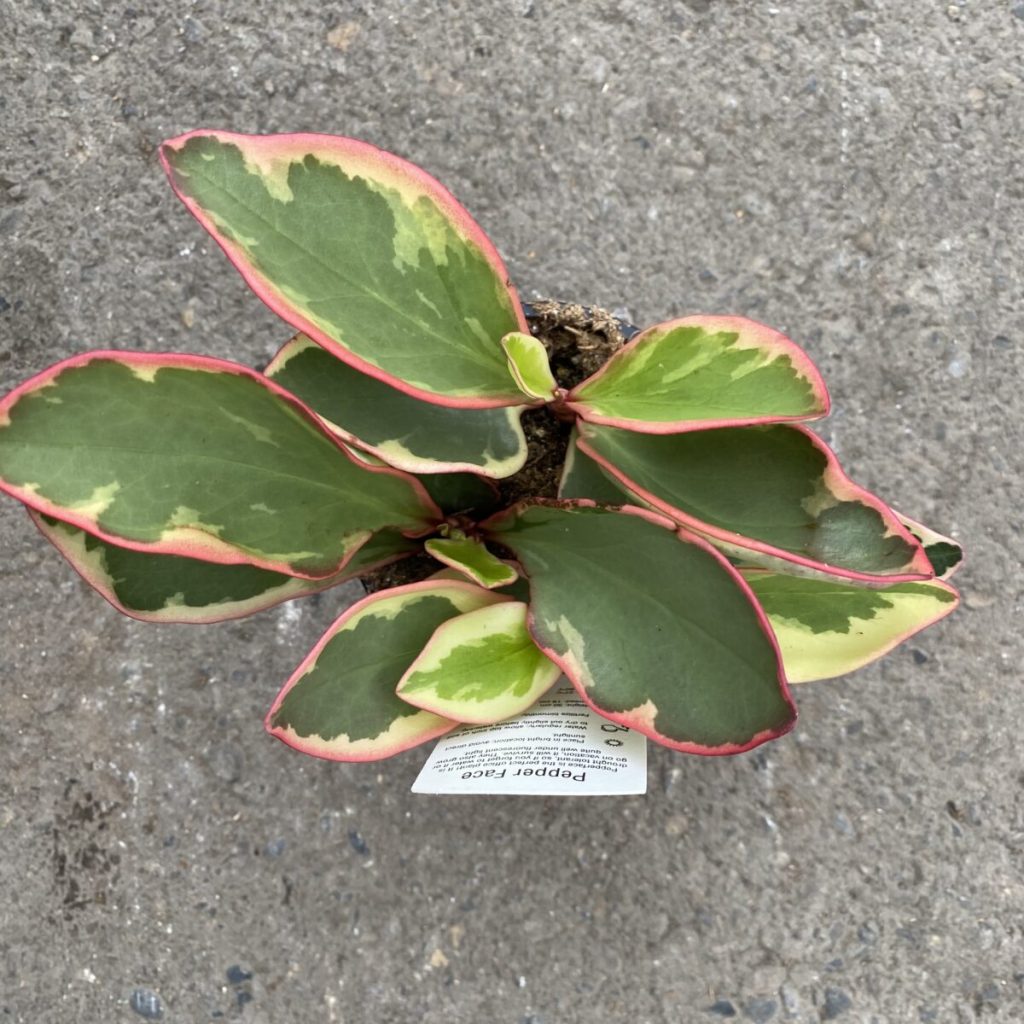
Peperomia Clusifolia is a tricolored variety of different hues of green and pink. The red markings on the leaves contribute to the reason it is amongst the most attractive Peperomia varieties.
The Peperomia Clusifolia plant can grow up to 6-7 inches. An interesting feature of this variety is that they produce flowers during bloom time, although they are scentless.
Peperomia Clusifolia can be grown both indoors and outdoors. When grown outdoors, some growers prefer to start their Peperomia Clusifolia propagation in nursery beds before they transplant them into pots or containers.
The Peperomia Clusifolia plant is a low-maintenance plant; caring and tending to this plant would not take a toll on your schedule. Either starting the propagation as a seedling or small pup depends on your choice.
Their growth is dependent on the provision of their basic requirements which are proper watering, organic soil, appropriate temperature, and a well-drilled container.
8. Peperomia Sepens
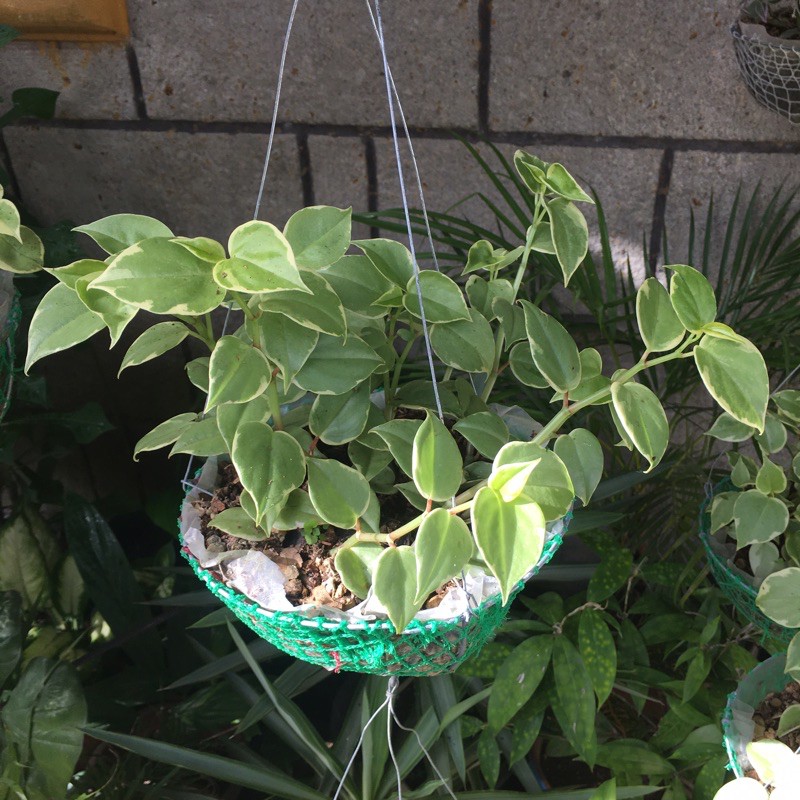
This plant is commonly referred to as the Vining Peperomia and is most times sold under this tag name.
As a crawling plant, it is grown as wall covers for gardens and aesthetic effects in the home. The heart-shaped is perfect for indoor or outdoor propagation. The thick leaves of this variety make it considered succulent, hence the emphasis on being cautious with their watering.
Provision of basic growth needs for this plant ensures it thrives, if growers are not familiar with what can happen when a requirement is absent or excessively provided, such grower is likely to encounter problems. It is advisable that before propagation, growers get acquainted with the requirements and how they ought to be appropriately provided.
Any problem that occurs with the plant can be easily combatted or treated if the grower is familiar with plant problems that are likely to occur, as well as their causes and treatment.
9. Peperomia Rubella
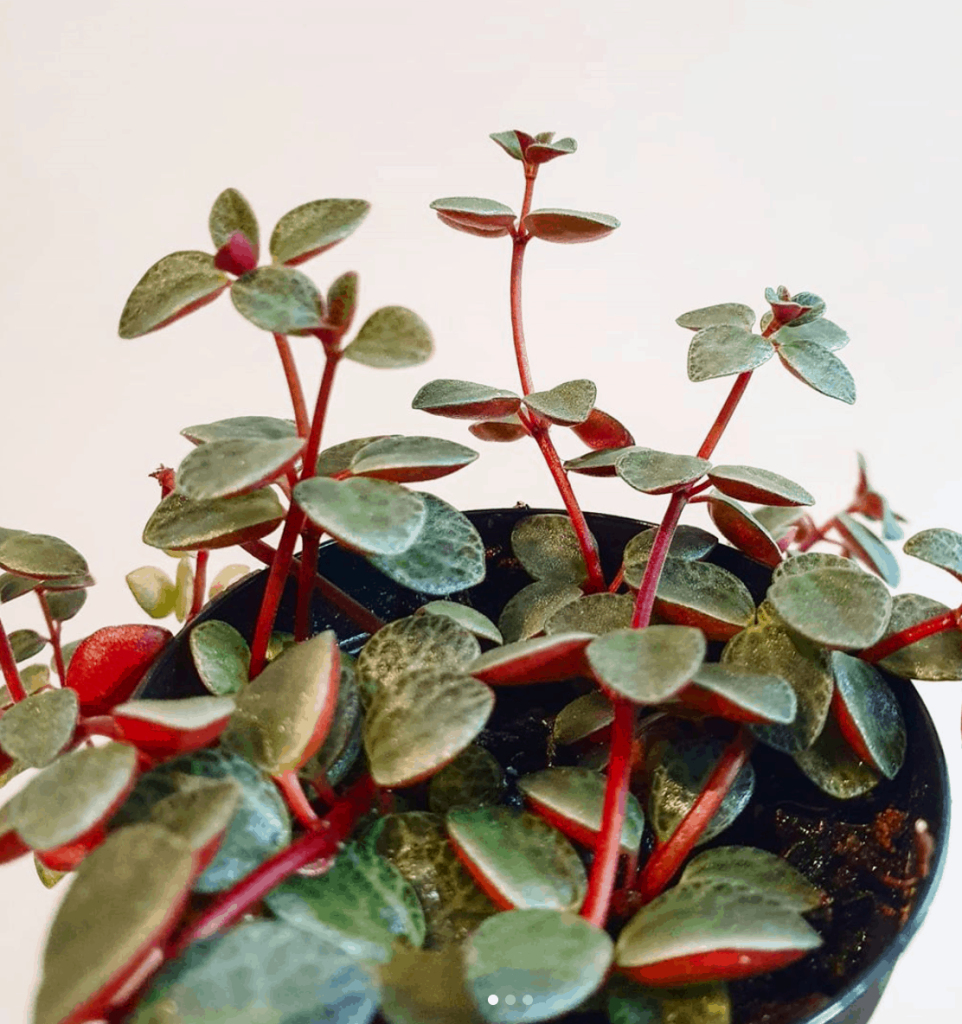
With a webbed foliage design and a red underside, the Peperomia Rubella is a common option for houseplant growers.
This variety can be pot and ground grown and would thrive regardless. Growers must remember that although the plants would thrive in either pots or nursery beds, those grown in nursery beds tend to grow faster and larger than those in containers.
Every Peperomia Rubella grower must be familiar with the following tips: the plant must be frequently misted to improve its humidity, it must be kept in warm temperatures, and must be kept in locations where it can receive bright but indirect sunlight as exposure to direct sunlight and heat can damage the foliage of the appearance of the plant.
Pruning also helps curtail if you do not fancy the trailing feature of the plant. If you do not want to prune the plant, make use of attractive dangle baskets and hangers to complement the trailing feature of the plant.
10. Peperomia Prostrata
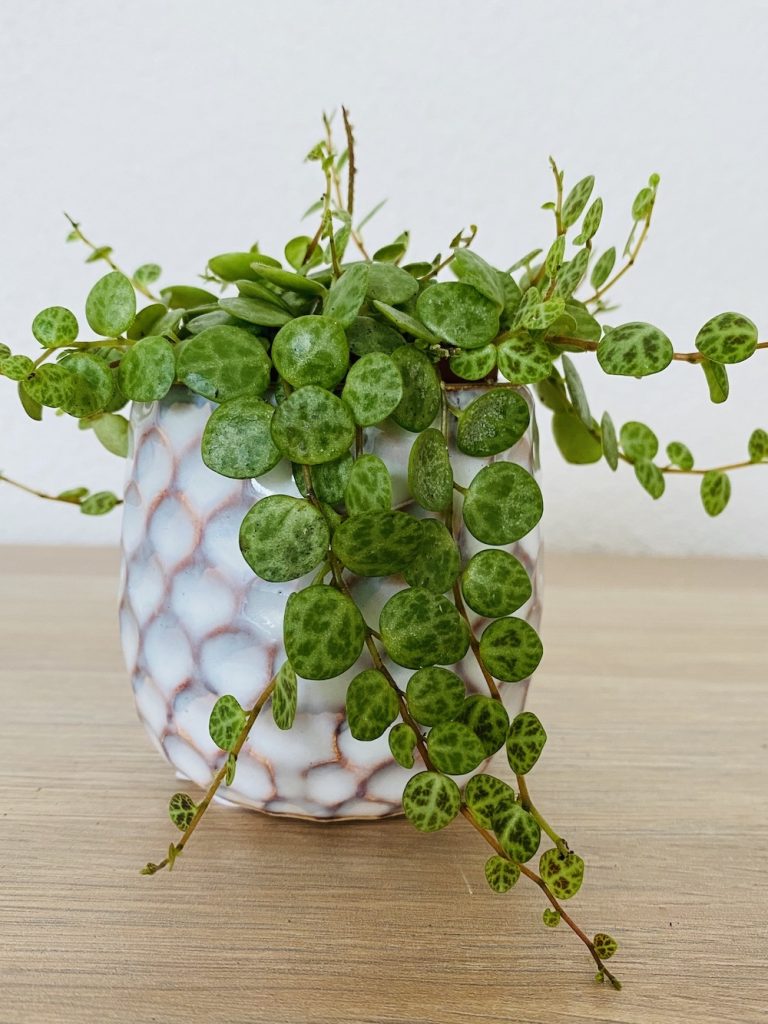
The common names of this plant are jade necklace, trailing jade, and creeping buttons. It is mostly sold under the tag name “string of turtles” because of its turtle-like foliage design.
All of these nicknames are derived from their ability to grow into a full-blown mass of trailing plants. Amongst other varieties, the plant is a slow grower and reaches full maturity in about three to five years.
This variety is common in Brazil. One disadvantage that comes with propagating this plant is since most growers adore its trailing feature and would often use it to accent the aesthetics of their home, they tend to place the plants in a dangling basket which is usually above light reach.
This implies that although this plant is beautifying your home, it might be deprived of adequate lighting and would in no time die. Growers must ensure that this plant receives adequate lighting by placing them in specific locations with bright indirect light, which may even be artificial in some cases.
11. Peperomia Dolabriformis
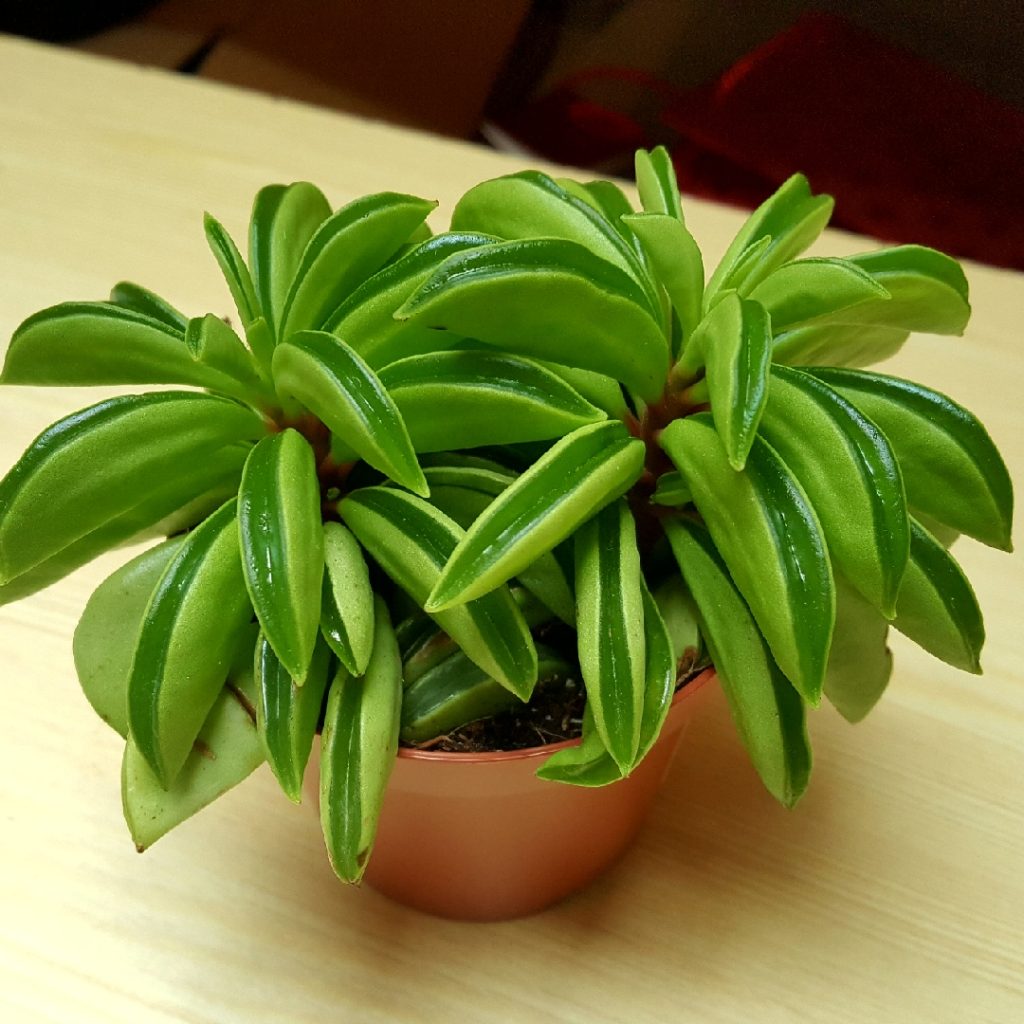
To some growers, the Peperomia dolabriformis is the most unusual and unique variety of the Peperomia species. It is commonly referred to as a prayer pepper plant. Alongside its unique foliage shape, the plant also produces small green and white flowers, although scentless when they bloom.
The growth needs of this variety are adequate watering, organic soil, proper lighting, well-drilled container, and appropriate temperature. When this plant is not adequately watered, it can experience sparse growth and lose its vibrant foliage color.
On the other hand, if overwatered, the soil can be exposed to root rot, which is a bad state for your Peperomia dolabriformis plant. For this variety to thrive, it must receive about 5 to 6 hours of bright indirect sunlight daily. If deprived of adequate lighting, you would notice that the plant would start drooping and the leaves would start turning brown.
This is a bad state for your plant because once the foliage color and appearance are affected and has gone past the stage of recovery, discarding the plant would be inevitable and this can be very disheartening for the grower.
12. Peperomia Fuzzy Mystery

The Peperomia Fuzzy Mystery is amongst the most attractive and unique varieties of the Peperomia plant. As the name implies, this plant has a fuzzy feel, which is a result of its hairy foliage feature. The foliage patterns are deep and veined lines, which makes the oval-shaped plant impossible to ignore.
Complement the beauty of this plant by placing them in brightly colored and designed containers. This is a good option if you are trying to lift a drab look of your living space. Never place these plants in an inconspicuous location as you would be toning down its aesthetic effect.
Provide a well-drilled container that allows for proper drainage of water and ensure they are kept in warm temperatures. If grown outdoors, bring them indoors as they find extreme weather conditions uncomfortable.
During winter, their roots become tender and are susceptible to plant issues; stay off watering and fertilizing during this period.
Final Note
Generally, most Peperomia species are low maintenance and are easy to propagate, so they are a good option for beginners.
These varieties can be easily purchased from nearby nurseries and online stores. Intending growers must be familiar with both the scientific name and nickname of the plant before ordering in others to get the desired choice.
We have provided a list of the most popular Peperomia varieties you can propagate, kindly do us the honors of letting us know your desired choice for propagation.
More on houseplants:
- Scindapsus Varieties: 6 Types Of Scindapsus Plants To Grow Today
- Pilea Varieties: 11 Types Of Pilea Plants To Grow Today
- Dieffenbachia Varieties: 9 Varieties To Grow Today
- Alocasia Varieties: 10 Common And Rare Types Of Alocasia
- Philodendron Brandi: How to Care For Them
- Croton Varieties, Plant Care & Problems (Complete Guide)
- Syngonium Varieties: 10 Common & Rare Types Of Syngonium
- 10 Beautiful Pink Houseplants For Your Home

